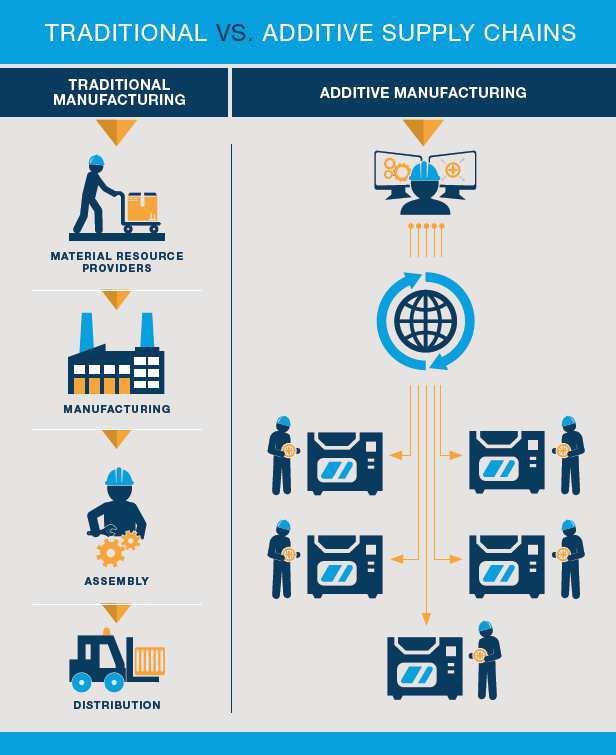Think of the word “tooling”. Usually, what comes to mind is hammers, screwdrivers, and other tools that could probably be found at your local hardware store. However, manufacturing engineering view tooling much differently. For them, tooling is seen as a family of aids that is used in the manufacturing and assembling of a product. It can be something as simple as a fixture used to fasted a part during an assembly. It could also be as complex as a mold that is used to form the shape of a car’s hood. Nonetheless of the application (as there are many), tooling often plays an important role in the product development cost and lead time to bring new products to market, since these tools can often be highly customized and difficult to re-purpose. This can be quite a challenge for suppliers which must balance cost, quality, and the lead time without passing these hidden expenses onto the consumer. Luckily, additive manufacturing is an established technology which can alleviate many of these points.
Looking to Learn More About Tooling?
Download our guide to learn about the business drivers for adopting 3D printing for production tooling instead o traditionally fabricated tools.
3D printing is often used for rapid prototyping, however has been gaining momentum for several years in manufacturing tooling applications. Additive manufacturing allows users to create extremely complicated designs in significantly less time compared to traditional tooling, and often slashes costs. The residual effects of this reduced lead time can automatically be realized since manufacturing engineers now have some breathing room when it comes to scaling up the manufacturing processes for new product. Additionally, additive manufacturing optimizes supply chains as it allows for de-centralized manufacturing. The tool designs can be shared globally and printed locally right on the factory floor.

The automated and digital nature of additive manufacturing is defied by almost any manufacturing facility being able to adopt this technology with excellent results. Contrary to popular belief, additive manufacturing is not going to get rid of traditional tooling, nor should it whatsoever, but it provides an appealing alternative for certain applications. In various scenarios, the highest value is observed for low-volume, complex designs under a very short lead time. Choosing the correct material is the key in order to achieve success for AM tooling. Many of the polymer-based materials offer varying properties that depend on the application. An example of this would be Nylon 12, which is reinforced with carbon fibers for increased stiffness or ULTEM™ for elevated heat exposure in excess of 350°F (176°C).